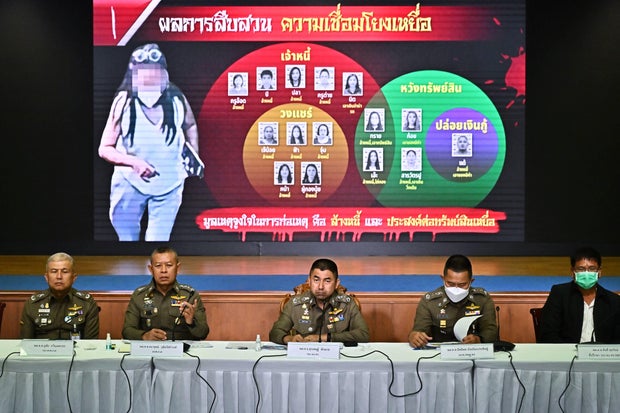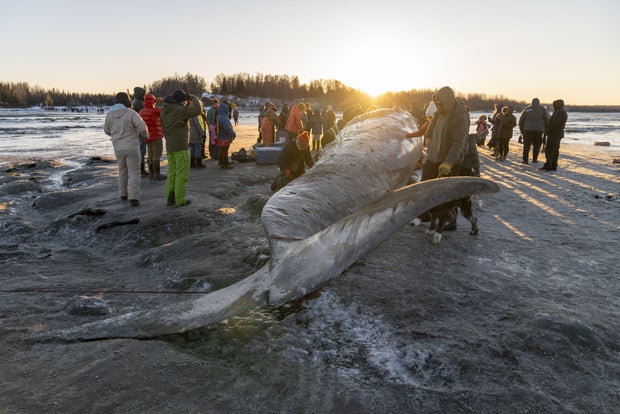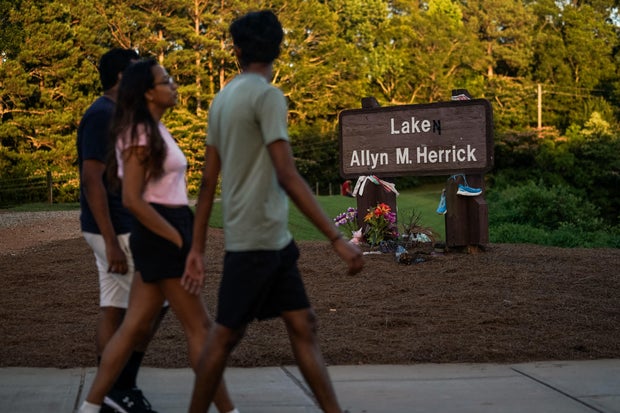CBS News
How much do you have to make to afford a $1 million home?

Getty Images
If you’re in the market for a new home, it’s important to put consideration into your budget. After all, home prices can vary wildly depending on a range of factors. And, if you buy a home that costs more than you can afford, you could be setting the stage for a long-lasting financial hardship — one that could end in foreclosure.
But what if you find the home of your dreams with a price tag of $1 million? How much money would you have to make to be able to comfortably afford it? That depends. There are rules of thumb you can follow to determine the answer, but your unique financial situation may also have an impact.
Find out the total mortgage loan amount you qualify for now.
How much do you have to make to afford a $1 million home?
If you search the internet for rules of thumb surrounding how much house you can afford, you’ll likely come across several, but the 28% rule and the 2.5 times your income rule are most prevalent. Here’s how they work:
- The 28% rule: The 28% rule suggests that your mortgage payments shouldn’t be more than 28% of your annual income.
- The 2.5 times your income rule: This rule states that you should be able to comfortably afford a home that costs 2.5 times your annual income.
“Figure a 20% down model, the mortgage would be for $800,000,” says Mark Charnet, founder and CEO of American Prosperity Group in Sparta, NJ. “A 30-year loan at 8% would be a monthly payment of $5,870. To that, add the property taxes of, let’s assume $20,000 annually and insurance of $9,000 annually. This would add $1,666 and $750 for a monthly payment of $2,416 for a grand total of $8,286 per month: Principal, plus interest, plus taxes, plus insurance.”
Here’s how much you’ll need to make to afford a $1 million home based on each of these rules (assuming a 7% mortgage rate, a 30-year loan term, $20,000 in annual property taxes and $9,000 in annual insurance premiums — variables that generally differ from one mortgage to the next).
How much do you have to make based on the 28% rule?
If you put 20% down on your $1 million home, you would need an $800,000 mortgage for the remainder of what you owe on the purchase. In this case, your mortgage payment would be $7,739 per month, inclusive of estimated property taxes and homeowners insurance costs. That amounts to about $92,868 per year in mortgage payments.
With 0% down, you can expect to pay $9,070 per month inclusive of estimated property taxes and homeowners insurance costs. With less than 20% down, you should also expect to pay for private mortgage insurance (PMI), which would cost about $1,250 per month. That works out to a total of $10,320 per month, or $123,840 in annual mortgage payments.
Based on these figures, you would need to earn $331,671.43 annually to afford a $1 million home with a 20% down payment if you follow the 28% rule. Or, you would need to earn about $442,285.71 annually to afford the same home with no down payment based on this rule.
Get preapproved for your new home today.
How much do you have to make based on the 2.5 times your income rule?
To determine how much money you need to earn annually to afford a one million dollar home based on the 2.5 times your income rule, you simply need to divide $1 million by 2.5. So, this rule suggests you need to earn $400,000 annually to afford a $1 million home.
Other considerations to note
Ultimately, rules of thumb are meant to be broken — and whether or not you can afford a $1 million home depends on your unique circumstances.
First, down payments, interest rates, property taxes and insurance are all variables that may change from one mortgage to another. Moreover, Charnet notes out that $20,715 in monthly income would be enough to afford this home if there were “no other debts to consider.”
As you determine whether or not you can afford a mortgage, it’s important to consider your unique mix of rates, premiums and taxes as well as how a new monthly payment fits into your current financial plan.
Compare your mortgage options now.
The bottom line
There’s no single rule of thumb to determine whether or not you can afford a million-dollar home. The 28% rule and the 2.5 times your income rule are great places to start, but it’s also important to think about your debts and other unique financial needs when determining how much house you can afford to buy.
CBS News
Woman linked to 14 cyanide murders is convicted and sentenced to death in Thailand

A Thai woman believed to be among the worst serial killers in the kingdom’s history was convicted and sentenced to death Wednesday for poisoning a friend with cyanide, in the first of her 14 murder trials.
Sararat Rangsiwuthaporn, 36, an online gambling addict, is accused of swindling thousands of dollars from her victims before killing them with the chemical.
A court in Bangkok convicted her Wednesday for fatally poisoning her friend Siriporn Kanwong.
The two met up near Bangkok in April last year to release fish into the Mae Klong river as part of a Buddhist ritual.
Siriporn collapsed and died shortly afterwards and investigators found traces of cyanide in her body. Last year, police said they collected fingerprints and other evidence from Sararat’s Toyota Forerunner.
LILLIAN SUWANRUMPHA/AFP via Getty Images
Police were then able to link Sararat to previously unsolved cyanide poisonings going back as far as 2015, officers said.
“The court’s decision is just,” Siriporn’s mother, Tongpin Kiatchanasiri, told reporters following the verdict. “I want to tell my daughter that I miss her deeply, and justice has been done for her today.”
Police said Sararat funded her gambling addiction by borrowing money from her victims — in one case as much as 300,000 baht (nearly $9,000) — before killing them and stealing their jewelry and mobile phones.
She lured 15 people — one of whom survived — to take poisoned “herb capsules,” they said.
Sararat faces 13 more separate murder trials, and has been charged with around 80 offenses in total.
Her ex-husband, Vitoon Rangsiwuthaporn — a police lieutenant-colonel — was given 16 months in prison and her former lawyer two years for complicity in Siriporn’s killing, the lawyer for the victim’s family said.
The couple, while divorced, had still been living together, the BBC reported. Police said Rangsiwuthaporn was likely involved in Sararat’s alleged murder of an ex-boyfriend, Suthisak Poonkwan, the BBC reported. Police said that after she killed him, Rangsiwuthaporn picked her up in her car and helped her extorte money from Suthisak’s friends.
Thailand has been the scene of several sordid and high-profile criminal cases.
Earlier this year, six foreigners were found dead in a luxury Bangkok hotel after a cyanide poisoning believed to be connected to debts worth millions of baht.
CBS News
Endangered fin whale measuring nearly 50 feet found dead near Anchorage, drawing curious onlookers to beach

An endangered fin whale that washed up near a coastal trail in Alaska’s largest city has attracted curious onlookers while biologists seek answers as to what caused the animal’s death.
The carcass found over the weekend near Anchorage was 47 feet (14.3 meters) long – comparable to the width of a college basketball court – and female, according to National Oceanic and Atmospheric Administration biologists.
Barbara Mahoney, a NOAA biologist examining the whale, told the Anchorage Daily News the whale was likely 1 to 3 years old.
Fin whales are the second-largest whale species, according to NOAA Fisheries, and fully grown can reach up to 85 feet long and weigh between 40 tons and 80 tons. Strikes by ships, entanglements in fishing gear, underwater noise and the effects of climate change are among the threats that fin whales face, according to the agency.
Hasan Akbas/Anadolu via Getty Images
Mandy Keogh, a NOAA marine mammal stranding coordinator, said fin whales generally aren’t seen this close to Anchorage and that recent high tides may have pushed the animal further into the Knik Arm.
People trekked across the mudflats to see the whale, which NOAA biologists and staff from Alaska Veterinary Pathology Services had anchored to the shore Sunday so they would be able to gather samples from the animal. But even after samples are analyzed, it can be difficult to determine a cause of death because of decomposition or a lack of obvious injuries, Keogh said.
Daisy Grandlinard was among the parents who accompanied a group of children to see the whale Monday. As they drew closer, they could smell it, she said.
“It was really interesting for the kids to be able to feel it, touch the bottom because it kind of had tracks on it, like a sled almost. And just to see the size of it, that was pretty cool,” she said. “We had already studied whales a couple of weeks ago, so it was fun to see one in person and say, ‘Oh, that’s what the baleen looks like in real life,’ and ‘Where is the blow hole?’ “
Biologists hoped to complete their work Tuesday, untether the carcass and “let the tide push it or move it,” Mahoney said. “Whatever it does or doesn’t do – we don’t know.”
According to NOAA, the whaling industry killed nearly 725,000 fin whales in the mid-1900’s in the Southern Hemisphere alone. Today, the major threat to the species comes from vessel strikes.
Other fin whales have washed ashore along the Western U.S. this year. In August, a large fin whale washed ashore in Southern California and died before rescuers could get to the scene, CBS Los Angeles reported. Officials said the whale, which was not fully grown, was believed to be in poor health due to visible bumps on its skin and a thin build.
In February, a 46-foot-long whale was found washed up on an Oregon shore — emaciated, entangled and covered in what appears to be wounds from killer whales.
CBS News
How Laken Riley’s death sent “a reality shock” through the college town of Athens, Georgia

Just two blocks from the University of Georgia campus, in a downtown courtroom in Athens, Georgia, Jose Ibarra is on trial for the murder of 22-year-old Laken Riley, a former UGA student who transferred to the nursing program at Augusta University’s Athens campus.
In late February, Riley was attacked during her morning jog on a trail near the University of Georgia’s intramural fields. As the investigation and trial unfolded, members of the Athens community grappled with a shaken sense of security.
“Just because we’re on campus doesn’t mean, necessarily, that the bad parts of the world can’t get in,” said Allison Mawn, a fourth-year student. “She did everything right. She told friends where she was going, she went on a popular trail during the day. She had her tracking location on. She even managed to call for help, and still it wasn’t enough.”
The case was thrust into the national spotlight when authorities arrested Ibarra, an undocumented Venezuelan immigrant who entered the country two years ago, and charged him with murdering Riley. In the midst of the election cycle, her death quickly became a flashpoint in the immigration debate, with former President Donald Trump and his supporters raising it at rallies and President Biden responding to heckling about it in his State of the Union address.
“In an instant, all the eyes across the country are on us,” said Mawn. “Now you can’t say the name Laken Riley without thinking about undocumented immigrants and illegal immigration.”
ELIJAH NOUVELAGE/AFP via Getty Images
Students have organized vigils and prayer groups, and participated in protests, rallies and runs in memory of Riley. A GoFundMe set up by her family amassed over $250,000 in donations that will go to the Laken Hope Foundation, an organization that will “promote safety awareness for women, aid and tuition assistance for nursing students, and children’s healthcare… all causes that Laken felt strongly about.”
For many students, Athens no longer feels like the safe haven they once thought it was. To ease fears, University of Georgia President Jere Morehead announced a $7.3 million campus safety initiative. The campus has been fortified by an expanded university police force, hundreds of additional lights and security cameras and multiple emergency call stations and license plate readers.
ELIJAH NOUVELAGE/AFP via Getty Images
Over the past months, “there was an expectation that we would magnify those efforts,” said P. Daniel Silk, the University of Georgia’s associate vice president for public safety. “We want to be more safe and more secure tomorrow than we were yesterday.”
While the Athens community waits for justice to be delivered, students bustle around campus, walking under the newly installed street lights, passing by additional emergency call systems and easing into a heightened security presence. Classes may go on, but the campus and community are changed.
“Regardless of what the verdict is, unfortunately we still lost a student. We still lost a life and nothing’s gonna change that,” said Mawn. “Things are never going to be a hundred percent the same for any of us here.”







